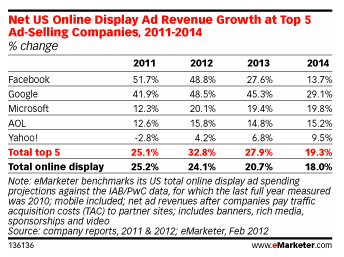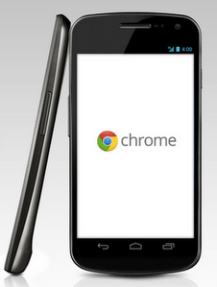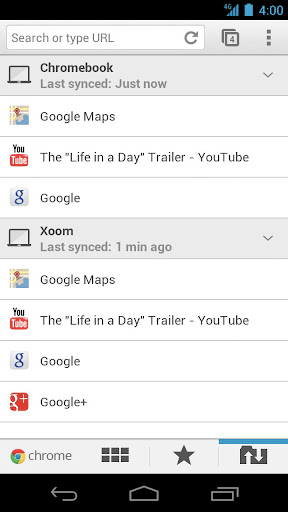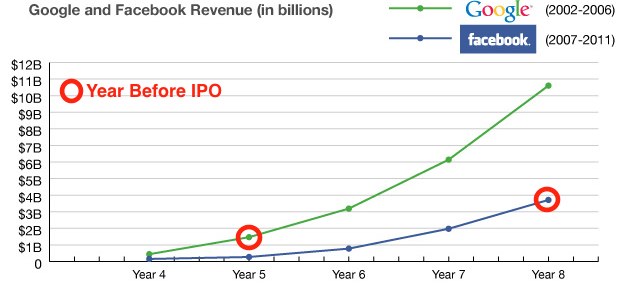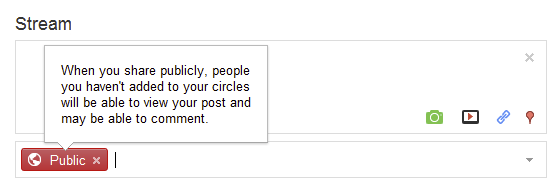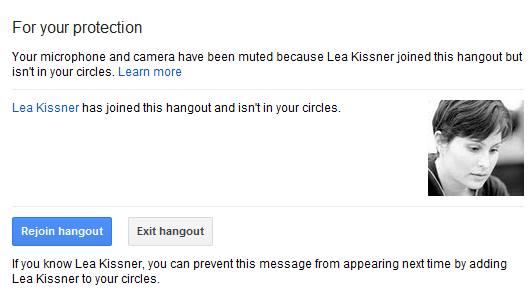General truths
1) Information is powerful - but it is how we use it that will define us
Avinash Kaushik
2) Experiment or die!
Avinash Kaushik
SEO
3) The only survey you should run on your site should be based on task completion rate. Ask visitors: why are you here? Were you able to complete your task? If not, why not?
Avinash Kaushik
4) The top 50 ecommerce companies only convert 2% of all their visitors. But don't optimize only for the 2% who convert - optimize for the rest as well. Make sure visitors want to come back.
Avinash Kaushik
5) SEO should not be just about rankings and traffic but conversions.
Lisa Myers, Verve Search
6) Search engines use 200 factors to rank including title tags, alt tags, url structure, and on page text. Even Google's engineers don't know the definitive ranking factors.
Judith Lewis, Seshet
7) Eyetracking - test different images and/or text color to change where your viewers are looking. Track with eyetracking software.
Judith Lewis
8) Optimize images using appropriate keywords.
Judith Lewis
9) Choose a content management system that creates clean URLs without multiple variables and with keywords included.
Judith Lewis
10) Have your most important content at the top of the page.
Judith Lewis
11) If using Javascript includes or AJAX use progressive enhancement to ensure that your content is visible
Judith Lewis
12) Make your site crawlable, visible and well-structured.
Judith Lewis
13) Lots of sites already rank for 'click here' - don't use the phrase in your linking text.
Judith Lewis
14) If you want to steal something from a brand you're competing with, optimize around the brand term eg
Eurostar weekend breaks. Searching for that term at one time didn't present the Eurostar site in the top 10 Google search results. (It does now.)
Judith Lewis
15) Go for high search volume/low competition keywords - the undesirables are low search volume/high competition.
Judith Lewis
16) Optimal keyword density - there's no magic number. Ignore all the theories, just make your content readable.
Judith Lewis
17) An acronym to remember:
SPAM - sites positioned above mine :0)
Chris Boggs via an unknown participant of Threadwatch 2005 (?)
18) Retail sites should measure the number of unique keywords being used to enter their sites because it's an indicator of whether they're optimizing holistically to rank for lots of different keywords.
Chris Boggs
19) Financial services companies should look at how many searchers are coming into their branch locator pages. And what the user's path is after that entry.
Chris Boggs
20) Offline drives online - very important
Judith Lewis@judithlewis
21) SEO must constantly evolve. The next big thing SEOs are talking about is also being seen by Google. They'll make sure it's not working as well in six months' time. And then the next big thing comes along...
Ammon Johns
22) Have a dedicated page per search phrase full of related unique text.
Peter Van Der Graaf
23) Don't just read blogs about SEO - try stuff out and see if it works.
Jonathan Stewart
24) Advanced operators like intext, intitle and inurl are powerful research tools.
Jonathan Stewart
25) Find out what your spammy competitors are up to, make it white hat and use their methods yourself.
Jonathan Stewart
26) Carry out keyword research for the words who, what, where, why and how for content ideas.
Patrick Altoft
Or use Wordtracker's free Keyword Questions tool - Ed.
27) Prioritize your web pages by working out sum of keyword search volume on your pages.
Patrick Altoft
28) Vary the anchor text across all your keywords.
Patrick Altoft
29) The Alexa ranking tool is great for checking out your direct as well as indirect competitors.
Joel Davis
Analytics
30) Tracking page views = high quality garbage
Avinash Kaushik
31) HITS -
How
Idiots
Track
Success by concentrating too much on things like page view, engagement, and of course, website hits.
Avinash Kaushik
32) Don't just measure revenue - figure out the economic value of all your visits. Eg, visitors who order a catalogue but don't purchase anything. The catalogue will result in many more orders than one internet order - measure that!
Avinash Kaushik
33) Internet marketing is unlike traditional marketing in that it is a two way medium.
Avinash Kaushik
34) These are metrics you should care about:
- Conversation rate - does anybody care? What about the number of comments per post?
- Amplification rate - Avinash has 70,000 followers but those followers have 6.5 million people following them. Look at your forwards and reTweets.
- Applause rate - no. of favorites, no. of likes, no. of Google+ etc
- Economic value - sum of short and long term revenue and cost savings of social contributions.
Avinash Kaushik
35) Understand, test, then be less wrong
Avinash Kaushik
36) Test for incrementality rather than try to do 900 things at once. Eg, test how much profit you earn by sending out: catalogue & email, then catalogue only, then email only, then no marketing at all to sections of your subscribers. This will help you understand the value of each of your channels.
Avinash Kaushik
37) Media mix modeling - what is the optimum mix of a company's spend? How should you allocate budget to search, content, YouTube, and Facebook?
Avinash Kaushik
11) Why/when to measure your SEO metrics:
Chris Boggs
- Reactively - following a loss of rankings, conversions, emails etc
- Proactively - when a new competitor appears on the market, to protect yourself an algorithm update or industry shift
Chris Boggs
38) You should be measuring proactively but have a reactive plan
Chris Boggs
39) Make sure you link up Google analytics and Webmaster tools.
Kevin Gibbons
40) Break down your SEO campaigns into a scalable and measurable project plan by categorising site sections as adgroups to create content and link building SEO plans. Eg, look at road bikes in Jan: mountain bikes in Feb, Cycling clothing in Mar.
Kevin Gibbons
41) Forecast results: find your average position for your target organic keywords and build an SEO forecast to show the predicted value.
Kevin Gibbons
42) Carry out monthly reporting - weekly's too often, quarterly's too slow.
Will Critchlow
43) Discover problems before the reporting stage. Look at what the actions are and what's going wrong there before your results come in.
Will Critchlow
44) Start-up accounting - research your microconversions, do people love your stuff? Again - don't wait for the bad results to come in.
Will Critchlow
45) The
ABC of analytics. Measure
Acquisition,
Behavior and
Conversions
Yehoshua Coren, Analytics Ninja
46) If your analytics data looks wrong, it probably is
Yehoshua Coren
Landing page optimization
47) Learn how to sell face to face, and you'll learn how to optimize a landing page. Ask your best salesperson what's wrong with your page. Ask them what common objections they face before people will buy
Karl Blanks
48) Before you start writing a landing page, try buying the product yourself (with your own money). Start with a search and follow the process from keyword to sale. What obstacles do you have to overcome?
Karl Blanks
49) Don't create abstract personas. Write for actual customers that you actually know.
Karl Blanks
50) Find out why people aren't taking action. @KissInsights is a great way of finding out why your customers aren't buying. It takes 55 seconds to create a survey on your site (apparently)
Karl Blanks
51) The act of writing turns many geniuses into morons :) Write like you'd say it. Say your words out loud. Record yourself saying the words. Listen back. Do you sound like an idiot?
Karl Blanks
52) Get someone else to read out your copy. When they stumble, or when they don't understand, you know your writing's unclear.
Karl Blanks
53) Copywriting tip. Be concise.
Karl Blanks
54) A headline must make your reader want to read more
Karl Blanks
55) Landing page optimization. Make the first sentence short. Make it bold.
Karl Blanks
56) Include a risk-reduction strategy - such as a money-back guarantee
Karl Blanks
57)
Q: What's the most important part of a landing page?
A: The part that's not working at the moment
Karl Blanks
58) Optimizing for an immediate sale can be unwise. You should also consider the need to generate and nurture new leads.
Karl Blanks
59) Conversion optimization can give you bigger budget for SEO because you're pushing more people through the sales funnel, which gives you more revenue.
Stephen Pavlovich
60) Stickiness improves conversion optimization and is about engaging customers, even after they've converted.
Stephen Pavlovich
61) Awareness, consideration and purchase is the buying process: does your marketing and website capture and engage visitors during all three phases? (Not just the last two.)
Stephen Pavlovich
62) Your visitors' path through your website: Immediate (when they first see your site - you want them to stay there) - session (their path through it - you want them to buy something) - between sessions (they've left your site - you want to get them back) - conversion (they come back and buy something).
Stephen Pavlovich
63) Goals for your website should be - relevance, trust, appeal and clear action.
Stephen Pavlovich
64) Relevance - make it abundantly clear what your product is.
Stephen Pavlovich
65) Action - make it clear what to do next.
Stephen Pavlovich
66) Instil benefits and trust. One way to do this is to have a good strapline. Eg John Lewis' 'Never Knowingly Undersold.' And make sure the strapline's visible - don't hide it in the smallprint.
Stephen Pavlovich
66) Capture contact details so that you can market after their first visit to your site - offer a free trial, free guide or email price alerts.
Stephen Pavlovich
67) Increase stickiness by persuasion and usability.
Stephen Pavlovich
68) Expedia found that increasing the number of results returned when someone searched for a hotel also increased conversion.
Jeff Slipko
69) Images set expectations - but the picture has to be good.
Jeff Slipko
70) Have clear price displays - with a big, bright font and marketing message above it.
Jeff Slipko
71) Increase urgency - Expedia do it by saying that a hotel has been booked 33 times in the last hour or that there are only 5 rooms left.
Jeff Slipko
72) Streamline your checkout process - make it one page only if possible. And don't include links back into your site - keep your customer focused on buying.
Jeff Slipko
73) Transactional sites: focus on conversion - not time spent on your site.
Jeff Slipko
74) User experience - make it as easy as possible for them.
Jeff Slipko
75) Be transparent about what you are offering.
Jeff Slipko
76) Start by reading these 108 conversion tips
Karl Blanks
PPC
77) Use PPC research and competitor ranking data to find the full potential of your market.
Kevin Gibbons
78) Personalize your landing page for each visitor
Nathan Richter from Monetate
79) Make your message consistent, from the PPC ad through the landing page to the point of sale
Nathan Richter from Monetate
80) Don’t let your ad write cheques your site can’t cash!
Avinash Kaushik
81) Why invest in PPC? Because it works - your competitors are already doing it.
Duncan Parry, Steak Digital
82) PPC captures demand other forms of advertising - Eg, television - generate
Duncan Parry
83) PPC performance reflects consumer attitudes, which are different in different countries
Duncan Parry
84) Google had 93% of UK search engine market share in Jan 2012. Microsoft and Yahoo are stronger in the US than they are in the UK.
Duncan Parry
85) Yandex has 63% of the Russian search engine market and is partnering with Twitter, Baidu has 78% in China (government protected against Google, mind you).
Duncan Parry
86) Twitter has recently announced it's starting a self service advertising program in the US and rumour has it they will do in the UK in Q2 of 2012.
Duncan Parry
87) Facebook, Linkedin and Twitter ads don't and won't perform as well as search ads. It's worth looking at them, as long as your/your clients' expectations are lower.
Duncan Parry
88) Use search query reports in AdWords to help discover the negative keywords you should be using. (Keywords you don't want your ad to appear for.)
Duncan Parry
89) If an ad's doing too well, there may be something wrong. Don't just look at the clickthrough rate - look at the click to sale rate to double-check.
Duncan Parry
90) Think about your brand when you're writing a PPC ad - it may look spammy and may not be good for it.
Duncan Parry
91) Look at the structure of your website to help design the granular structure of your PPC account. (You need structure.)
Duncan Parry
92) You can target mobile and tablet in your PPC campaigns - there's a strong correlation between TV campaigns and these gadgets in the evenings, for example.
Duncan Parry
93) AdExtensions in Google AdWords are free to add and can show, eg show the number of Google+ clicks on a link; or call extensions (useful for takeaway restaurants).
Duncan Parry
94) Sitelinks in Google AdWords add additional links to ads in top positions. They're great for directing consumers to the right page in one click.
Duncan Parry
Link building
95) Diversity in link building is key. Use blog posts, press releases.
Judith Lewis
96) Google knows everything about your link building efforts. Do it organically and naturally or you'll be found out.
Judith Lewis
97) Link syndication - only try it if you already have lots of links.
Patrick Altoft, Brand3
98) Reciprocal links are good quality unless they come from a links page
Patrick Altoft
99) The easiest links to get are from people you already know: customers, suppliers, friends, bloggers
Patrick Altoft
100) Linkbait (eg a great infographic) is difficult to create, it's hard to control the anchor text you receive, and you'll only get links to your linkbait page.
Patrick Alto ft
101) If you make linkbait, email your contacts to let them know about it, don't just release it on social media
Patrick Altoft
102) Bad links can hurt sites and the only way you can recover is to remove the links and submit a re-inclusion request
Patrick Altoft
103) Identify the social influencers in your markets and find out where they live: Twitter, LinkedIn, Facebook?
Lisa Myers
104) Analyze the anchor text of the links to you and ask to have it changed if necessary
Lisa Myers
105) Link management is necessary, especially if there's more than one person in your company doing it. If only to stop you targeting the same person twice.
Lisa Myers
106) Don't build links without improving your website first.
Patrick Altoft
107) Find sites that have published similar content to yours, to target in your link building campaigns.
Patrick Altoft
108) 'Search by image' in Google. Put in an image url and you can find out which competitors published that image. They might be someone who wants to publish your infographic.
Patrick Altoft
109) The tag hreflang is extremely useful if you want to sell anywhere other than UK. There's more information at on hreflang on this blog post
Patrick Altoft
110) Hold a competition. They're good for links, social media integration and natural traffic.
Mikkel deMib Svendsen
111) Focus on the 'best' in your competition, eg most beautiful baby or coolest car. People can't resist joining in.
Mikkel deMib Svendsen
112) Make it easy for people to participate - just ask for name and email address and you'll get more participants. You can always get more details at a later stage.
Mikkel deMib Svendsen
113) Create a hitlist - people love them, especially if they're on them.
Mikkel deMib Svendsen
114) Post a link on Wikipedia even though it's nofollow. People will use that link on their own website where it might not be nofollow.
Mikkel deMib Svendsen
Social media
115) Have a qualified person doing your social media, and give them enough time to do it, but: automate the rest or the ROI will swallow you whole
Paul Madden
116) Facebook campaigns are difficult to automate. Concentrate on Twitter.
Paul Madden
117) Volume of updates on social media platforms: post no more than two a day on Facebook or people will get irritated. On Twitter post between 12 and 20 per account (you can have more than one account).
Paul Madden
118) Monitor relevant social campaigns of brands, direct competitors and large advertisers that mention your niche.
Marcus Tober
119) 'Hijack' large events eg the Superbowl, soccer matches, Academy Awards.
Marcus Tober
120) Retweet an influencer. If he retweets you back, you can gain a lot of followers.
Marcus Tober
121) Facebook marketing tends to require superb content and a complete social media strategy. Both are hard to come by when you're on a budget.
Marcus Tober
122) Topic hijacking is much harder in Facebook - posting on a brand's wall is not very effective.
Marcus Tober
123) Pinterest is the brand new and massive social media platform. Where Flickr meets Twitter.
Joel Davis
124) 5000 Dell employees have been trained in social media, and many of those are listening and engaging with customers
Joel Davis
125) Measure
- conversations
- source
- geo
- sentiment
- influentials
- text analysis
- content
126) Human analysis should account for 80-85% of social media measuring.
Joel Davis
127) The National Express website and Marks and Spencer are examples of great social engagement. Don't shout at your customers.
Avinash Kaushik
128) Social is not a sideshow anymore. It's not just Twitter, Facebook etc - it has a much deeper impact that will become more and more important.
Avinash Kaushik
129) Google+ may not be a ranking factor at the moment but it is a visibilty factor so don't ignore it
Judith Lewis
130) Branding: Give your blog a name. Give your email newsletter a name.
Sundeep Kapur
131) Choose several keywords that are critical to your business. Monitor them on Twitter. Use them in your Tweets.
Sundeep Kapur
132) Podcasts are much underused. Answer customers' questions - in bite-sized chunks. A great way of building a relationship with your customers.
Sundeep Kapur
133) Social media success relies on actionable headlines. WineEnthusiast.com ask their audience to choose the headline for the following days email
Sundeep Kapur
Social tools
134) Tools for monitoring social media, Strawberry Jam and Pearltrees
Andrew Girdwood
135) Use BufferApp.com to enhance your Twitter campaigns. It works out when the best time is to send your tweets.
Andrew Girdwood
136) Monitor cheaply and react quickly.
Andrew Girdwood
137) Strategy is better than shortcuts.
Andrew Girdwood
138) Social Oomph - creates reservoirs of updates for various platforms and emails you when it runs out.
Paul Madden
139) dlvr.it - takes a feed, applies filters, posts to a network and is free
Paul Madden
140) Social Enhancer lets you export data from social campaigns to csv, xls etc. It pulls the data down to let you analyze it.
Paul Madden
142) If you're paying for a tool, use it!
Marcus Tober
143) Paid tools such as Radian6 SM2 Brandwatch and Sysomos are better than any of the free social media monitoring tools.
Joel Davis
Advertising tools
144) Outbrain is a related link widget for the bottom of your blog.
Andrew Girdwood
145) Tumblr for $1 lets you promote your product.
Andrew Girdwood
146) Luminate - lets publishers put ads on their pictures.
Andrew Girdwood
147) Skimlinks and Viglink are very useful affiliate tools.
Andrew Girdwood
148) XAd - advertising for mobile devices.
Andrew Girdwood
149) Guess which ads were more successful at Which test won and learn which ones will work for you in the process.
Dax Hamman
150) Use Canned banners to help create your own banner ads.
Dax Hamman
Retargeting/remarketing
151) Retargeting: determine the best time to remarket to your visitors. This might not be immediately (if, for example, you sell seasonal products)
@guylevine
152) Use lots of different designs to prevent banner burnout
@guylevine
153) Use frequency capping and ad scheduling settings to prevent over-exposure
@guylevine
154) Innovation: Ads with no call to action can be used to build your brand image. You got lots of views and low costs (but few clicks)
@guylevine
155) Create marketing lists that you want to convert at a particular time of year (eg, if you sell winter coats, annual car insurance, mobile contracts)
@guylevine
156) Don't be a stalker. Limit the number of views and the timeframe for your ads
Dax Hammond, @chango
Mobile and local
157) According to IBM, Black Friday 2011 saw 155% growth in the use of mobile purchasing between 2010 and 2011. 14% of purchases on that day were made using mobile devices.
Dan Patmore
158) John Lewis are very good at optimization for local search. Each of their branches has a page to itself and are linked to from the opening times websites that are springing up.
Dan Patmore
159) Richer Sounds makes great use of locally based offers.
Dan Patmore
160) >100% better clickthrough rate has been seen at times for mobile activity compared with traditional.
Dan Patmore
161) There are fewer ad spaces on mobile, therefore there will be much more aggressive competition.
Dan Patmore
162) Bear in mind what time of day your customers will be using their tablets (in the evening, in front of the tv perhaps?) and target campaigns accordingly.
Dan Patmore
163) Should tablets be treated as mobile, or as desktop? Testing campaigns are the only way to decide this. It may turn out that they need to be treated as a separate entity altogether.
Dan Patmore
Competitive analysis
164) Match the effort of the top positions or you'll not catch up
Peter Van Der Graaf
165) With tech and text you can only make 100% effort but you can have lots more than 100% by getting more links than your competitors.
Peter Van Der Graaf
168) Research your competitors in the top 10 (pick comparable samples) and examine their backlinks. (Wordtracker's Link Builder tool will help you do this.)
Peter Van Der Graaf
166) Find out what their link acquisition strategies are.
Peter Van Der Graaf
Duplicate content issues
167) Short term fixes are no good - address the issues first and then do the spring cleaning. A good way to start is by having a logical information architecture eg a travel site will have continent/country/city.
Sam Crocker
168) Create mapping and rewrite rules.
Sam Crocker
169) PPC landing pages, for example with different price structures. The first thing to ask yourself is why you need two pages. Noindex/follow or rel=canonical if you really need it.
Sam Crocker
170) How to investigate for duplicate content:
Sam Crocker
- Snippet test your own content from time to time.
- Create a script to automatically set up Google alerts for the first couple sentences of everything you publish.
- Monitor your server logs for traffic spikes and carefully block IPs if you spot a pattern.
- When all else fails, DMCA (Digital Millennium Copyright Act) them.
- For image theft use the Google 'search by image' as mentioned above. Replace the image with something silly to make them look like fools. :o)
171) There shouldn't be duplicate content on your mobile site, as it will (or should) probably target different keywords.
Sam Crocker
172) Same for international content. It should be optimized for that market - not a straight translation from the English. Hire a translator if it is a straight translation - don't automate it.
Sam Crocker
173) Check that copy you've commissioned isn't copied from the web with Copyscape and the like.
Ralph Tegtmeier, Fantomaster
Thanks to everyone for their contributions. We were blogging live, so please excuse any errors. :o)
 YouTube is announcing a new program to nurture the next generation of video bloggers.
YouTube is announcing a new program to nurture the next generation of video bloggers.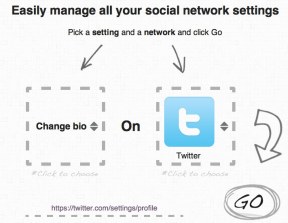 I’m interrupting your tech news flow to tell you about a nifty little tool you’ll probably want to bookmark for later. It’s called Bliss Control, and it comes from the same folks that brought you the email notifications management utility called Notification Control (and seriously – check that one out, too, if you get too many social media updates in via email. Inbox savior!).
I’m interrupting your tech news flow to tell you about a nifty little tool you’ll probably want to bookmark for later. It’s called Bliss Control, and it comes from the same folks that brought you the email notifications management utility called Notification Control (and seriously – check that one out, too, if you get too many social media updates in via email. Inbox savior!). 
 The Google Maps API used to be free, as it was trying to gain popularity and displace MapQuest and Yahoo. At the beginning of March it began charging anyone pulling over 25,000 page loads a day $4, $8, or $10 per additional 1,000 loads, and also now offers Premier Tier. Foursquare and Apple jumped ship, plenty of other big companies might do the same. With it now publicly traded, investors could push Yelp to switch to a free alternative.
The Google Maps API used to be free, as it was trying to gain popularity and displace MapQuest and Yahoo. At the beginning of March it began charging anyone pulling over 25,000 page loads a day $4, $8, or $10 per additional 1,000 loads, and also now offers Premier Tier. Foursquare and Apple jumped ship, plenty of other big companies might do the same. With it now publicly traded, investors could push Yelp to switch to a free alternative.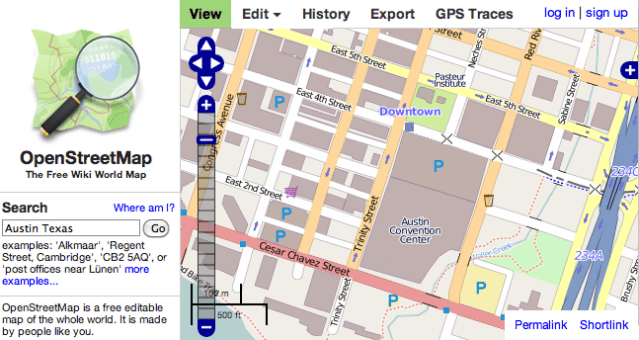
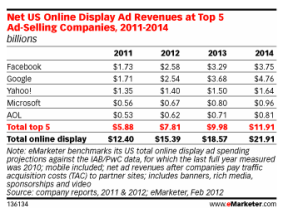 Research firm eMarketer has put together a few interesting data points that show Google doing better in display ads than you might have realized. That is, by growing this business across properties and networks that it at some point acquired — YouTube, DoubleClick, and mobile (AdMob) — it’s set to pass Facebook’s own display business.
Research firm eMarketer has put together a few interesting data points that show Google doing better in display ads than you might have realized. That is, by growing this business across properties and networks that it at some point acquired — YouTube, DoubleClick, and mobile (AdMob) — it’s set to pass Facebook’s own display business.